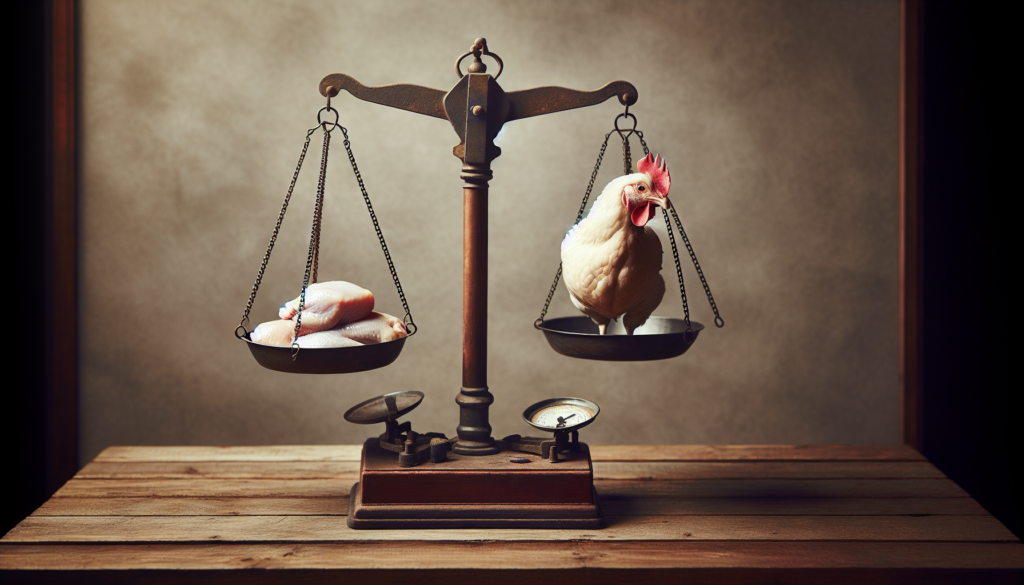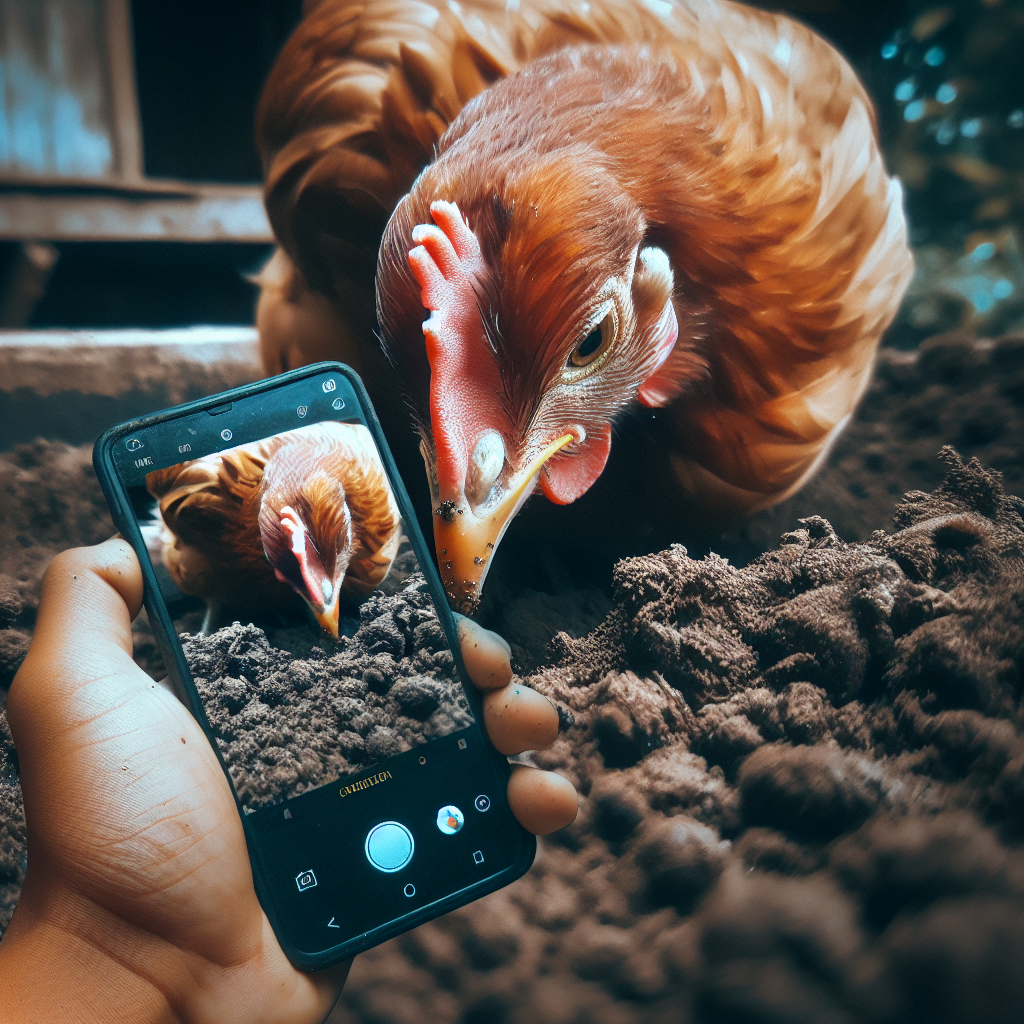In the realm of poultry production, the ethical implications of culling chickens have been a contentious topic of discussion. When it comes to the decision of selectively removing chickens from a flock, numerous ethical concerns arise, encompassing considerations such as animal welfare, sustainability, and the greater global impact. While some argue that culling is a necessary evil to maintain optimal flock health and productivity, others advocate for alternative approaches that prioritize humane treatment and preservation of biodiversity. This article delves into the various viewpoints surrounding the ethical implications of culling chickens, shedding light on a subject that forces us to confront the complex intersection of ethics and agriculture.
Introduction
In recent years, the concept of animal rights has gained significant attention, creating a profound impact on various aspects of human life. From animal welfare concerns to environmental impact, human health and safety to economic considerations, legal and regulatory frameworks to cultural and social factors, the ethical implications of culling chickens have emerged as a critical issue. By exploring these different perspectives, we can gain a comprehensive understanding of the multifaceted nature of this topic.
Animal Rights Perspective
Animal Welfare Concerns
From an animal rights perspective, one of the primary ethical implications of culling chickens lies in the concern for their welfare. Culling, which involves the mass killing of chickens, raises questions about the moral responsibility humans have towards these sentient beings. The methods used in culling, such as gassing or maceration, can cause unnecessary pain and suffering to the animals. Thus, it becomes crucial to evaluate alternative methods that prioritize the welfare of chickens while addressing the need for population control.
Moral Considerations
Another aspect of the ethical implications of culling chickens involves moral considerations. Many argue that it is morally wrong to arbitrarily determine the fate of these animals without considering their intrinsic value and inherent right to live. Some proponents of animal rights suggest that a moral duty exists to protect the lives of chickens, irrespective of their economic value to humans. This moral standpoint urges us to reevaluate our practices and seek alternative solutions that align with compassionate and ethical treatment of all living beings.
Alternative Solutions
To mitigate the ethical implications of culling chickens, alternative solutions need to be explored. Implementing more humane and ethical methods of population control, such as non-lethal sterilization techniques or the adoption of comprehensive breeding control programs, can uphold animal welfare concerns while still managing population sizes. Promoting responsible and sustainable chicken farming practices, including free-range systems or small-scale farming, can also provide viable alternatives to traditional culling methods.
Environmental Impact
Ecological Disruption
Culling chickens can have a significant ecological impact, leading to the disruption of local ecosystems. Chickens play a vital role in controlling pests, especially in agricultural settings, by consuming insects and weeds. By drastically reducing or eliminating chicken populations, the ecological balance may be disturbed, resulting in increased pest populations and the need for more extensive pesticide use. This disruption can also extend to other species that depend on chickens for food or habitat, causing a ripple effect throughout the ecosystem.
Sustainable Farming Practices
To address the environmental consequences of culling chickens, sustainable farming practices must be prioritized. Implementing holistic and regenerative agricultural systems can help preserve the natural balance within ecosystems while still managing chicken populations effectively. These practices include rotational grazing, organic farming methods, and the establishment of biodiverse habitats. Adopting such sustainable approaches not only minimizes the reliance on culling as a population control measure but also supports the long-term health and resilience of both the environment and the chickens themselves.
Human Health and Safety
Zoonotic Diseases
Culling chickens also entails ethical implications from a human health and safety standpoint. One of the primary concerns is the potential transmission of zoonotic diseases, which are diseases that can pass from animals to humans. Intensive farming practices, often associated with high-density chicken populations, increase the risk of disease outbreaks. Culling is sometimes implemented as an emergency response to prevent the spread of contagious diseases. However, ethical concerns arise when examining the underlying factors that contribute to these disease outbreaks, such as overcrowding and poor animal welfare conditions.
Humane Slaughter Practices
In addition to disease transmission concerns, the ethical implications of culling chickens extend to the methods used for slaughter. Ethical standards dictate that animals, including chickens, should be treated with dignity and respect even at the end of their lives. Humane slaughter practices, such as utilizing stunning methods that render the animals unconscious before slaughter, can alleviate unnecessary suffering for the chickens. Implementing these practices ensures that ethical considerations extend beyond population control to encompass every stage of their lives.
Economic Considerations
Farmers’ Perspective
From an economic standpoint, culling chickens can have both positive and negative implications for farmers. On one hand, culling can be seen as a necessary measure to maintain profitability by managing overcrowding or controlling disease outbreaks. However, the financial burden of culling, including the costs associated with mass killings and disposal of the carcasses, can be substantial. This raises ethical questions about the responsibility of society to support farmers in finding alternatives that are both economically viable and ethically sound.
Consumer Perception
Consumer perception also plays a role in the ethical implications of culling chickens. Increasingly, consumers are prioritizing ethically sourced and sustainably produced food. The controversy surrounding culling practices can lead to negative perceptions of the industry, resulting in reduced consumer confidence and potentially impacting the demand for chicken products. This shift in consumer behavior poses a challenge for farmers and the industry as a whole, emphasizing the need for alternative approaches that align with evolving ethical standards.
Alternative Livelihoods
To address the economic considerations of culling chickens, exploring alternative livelihoods can provide viable solutions. Diversification of farming practices, such as incorporating other agricultural activities or transitioning to more sustainable forms of farming, can help farmers adapt to changing ethical landscapes while ensuring their economic stability. Government support for training and resources that enable farmers to transition to alternative livelihoods is crucial in mitigating the economic implications of culling.
Legal and Regulatory Frameworks
Animal Welfare Laws
The ethical implications of culling chickens intersect with legal and regulatory frameworks designed to protect animal welfare. In many jurisdictions, laws are in place to ensure that animals are treated humanely and that unnecessary suffering is minimized. These laws often require specific methods for culling, such as pre-slaughter stunning. However, there may be variations in the enforcement and interpretation of these laws, highlighting the need for continued efforts to strengthen and harmonize animal welfare regulations worldwide.
Biosecurity Regulations
Biosecurity regulations also come into play when evaluating the ethical implications of culling chickens. The prevention and control of disease outbreaks often necessitate culling as a measure to contain the spread of contagious diseases. These regulations aim to protect both animal and human health, emphasizing the importance of stringent biosecurity measures and early detection systems. Ethical considerations arise with the need to strike a balance between disease control and minimizing the negative impacts on animal welfare and the environment.
Government Interventions
Government interventions play a vital role in addressing the ethical implications of culling chickens. By implementing and enforcing comprehensive regulations, governments can ensure that the welfare of animals is protected while still meeting the demands of disease control and population management. Public funding and support for research into alternative methods of population control can enable the development of more ethical and sustainable solutions. Collaboration between governments, farmers, and animal rights organizations is crucial in shaping effective policies that prioritize ethics without compromising public health and safety.
Cultural and Social Factors
Cultural Practices
Considering the cultural and social factors surrounding the ethical implications of culling chickens is essential in understanding the broader context. Cultural practices, traditions, and beliefs can influence perspectives on animal rights, shaping attitudes towards culling. Society’s values and norms often determine the level of acceptance or opposition to certain practices. Engaging in open and respectful dialogue about these cultural practices can help bridge the gap and encourage the exploration of alternative solutions that respect both cultural heritage and ethical considerations.
Impact on Communities
Culling chickens can have significant impacts on communities, particularly those reliant on chicken farming for economic stability. In regions where poultry farming is a dominant industry, mass culling can devastate local economies, resulting in job losses and financial consequences for individuals and communities. The ethical implications extend beyond animal welfare to encompass the social and economic well-being of communities. Supporting affected communities through targeted interventions, such as retraining programs or welfare assistance, can help mitigate the negative effects of culling.
Public Perception and Moral Responsibility
Transparency
Transparency is a crucial element in addressing the ethical implications of culling chickens. Engaging with the public and providing clear information about the reasons behind culling decisions, the methods employed, and the efforts made to explore alternatives, can foster a sense of trust and accountability. Transparency allows for public scrutiny and promotes a shared moral responsibility between the industry, governmental bodies, and consumers.
Accountability
Accountability goes hand-in-hand with transparency in addressing the ethical implications of culling chickens. Stakeholders involved, including farmers, industry representatives, governmental bodies, and consumers, should be held accountable for their actions and decisions. Establishing mechanisms for independent audits, ethical certifications, and monitoring systems can help ensure that practices align with ethical expectations and allow for appropriate consequences when ethical standards are not met.
Consumer Activism
The role of consumer activism cannot be understated in influencing ethical practices. When consumers actively advocate for more ethical and sustainable practices, industries are pushed to respond. As awareness grows about the ethical implications of culling chickens, consumer activism can drive demand for alternatives that align with humane treatment and sustainability. By making informed choices and actively supporting companies and farmers that uphold ethical standards, consumers have the power to drive positive change and create a more ethical chicken farming industry.
Long-term Consequences
Genetic Diversity
Culling chickens without considering the long-term consequences can have severe impacts on genetic diversity within chicken populations. Mass culling often targets specific breeds or strains, potentially leading to a loss of genetic diversity over time. Reduced genetic diversity can make chicken populations more susceptible to disease outbreaks and other environmental threats. It is important to consider the long-term implications on the resilience and adaptability of chicken populations when making decisions about culling.
Species Preservation
The ethical implications of culling chickens also extend to species preservation. Some chicken breeds may be at risk of extinction due to a variety of factors, including selective breeding practices and commercial farming preferences. Culling practices that disproportionately affect certain breeds can further endanger these populations, eradicating valuable genetic resources and cultural heritage. Efforts to preserve endangered chicken breeds, such as establishing genetic conservation programs and supporting small-scale farmers who prioritize breed preservation, can help ensure the long-term survival of these valuable species.
Conclusion
The ethical implications of culling chickens are far-reaching, encompassing animal rights, environmental impact, human health and safety, economic considerations, legal and regulatory frameworks, cultural and social factors, public perception, and long-term consequences. By addressing these various perspectives with transparency, accountability, and a shared moral responsibility, we can strive towards a more ethically conscious approach to balancing population control, animal welfare, and sustainable agriculture. Through collaboration and innovation, alternative solutions can be explored, ensuring the well-being of chickens, the environment, and future generations.




